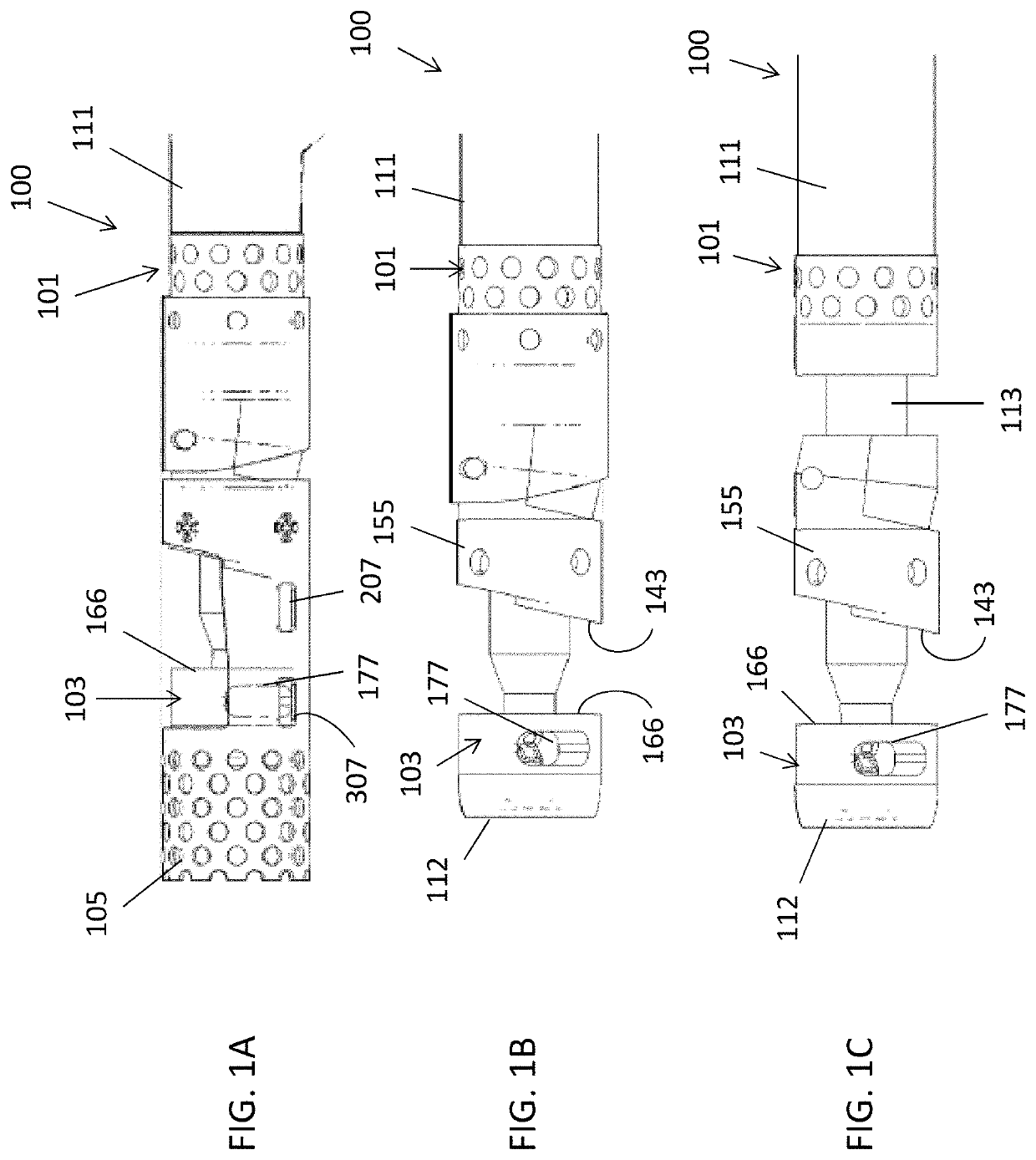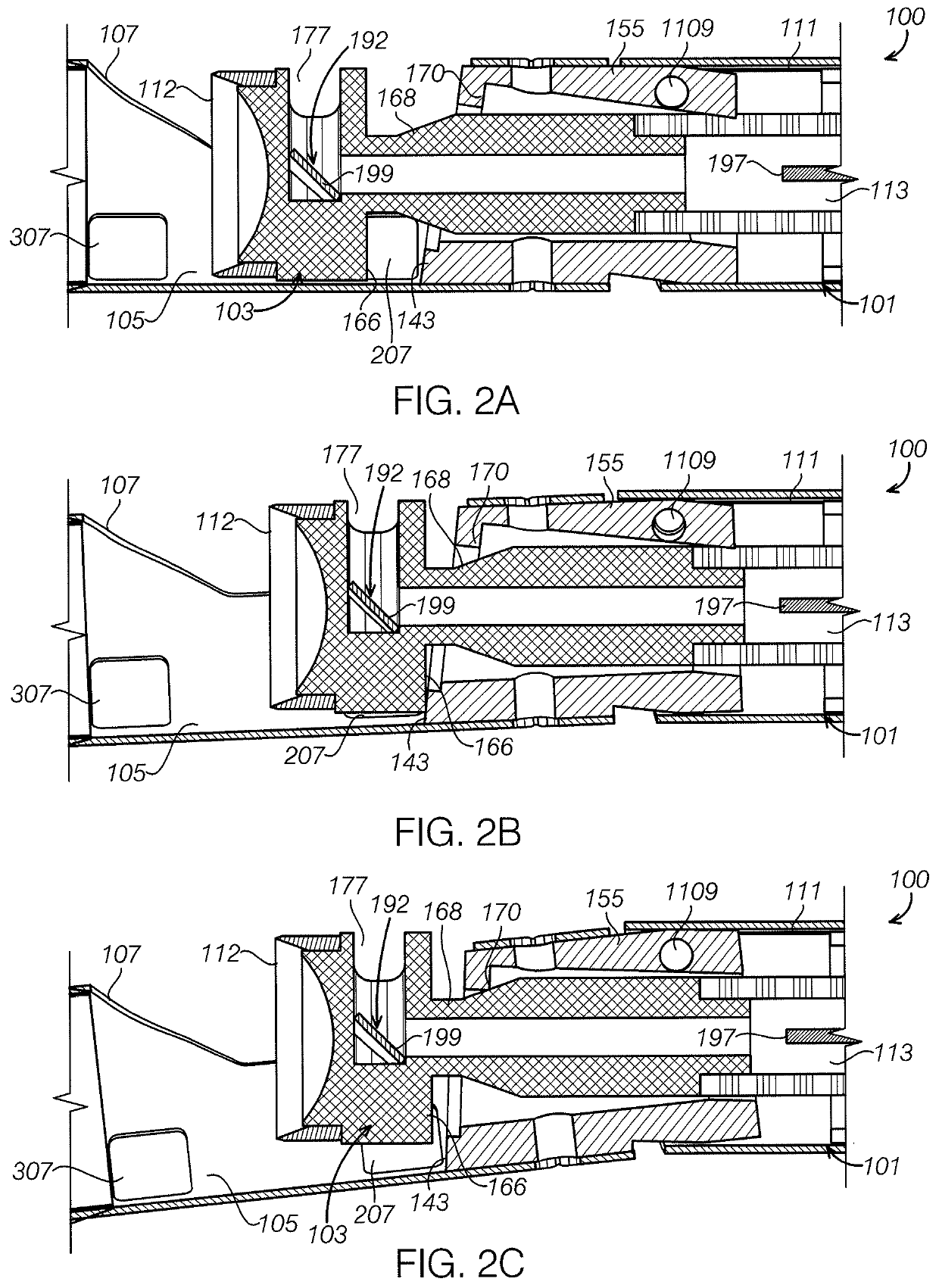Atherectomy catheters and occlusion crossing devices
a technology of atherectomy and crossing device, which is applied in the field of atherectomy catheters, can solve the problems of occlusion of artery, low surgical efficiency, and inconvenient atherectomy, and achieve the effect of safe bend and clear imaging region
- Summary
- Abstract
- Description
- Claims
- Application Information
AI Technical Summary
Benefits of technology
Problems solved by technology
Method used
Image
Examples
Embodiment Construction
[0129]Described herein are atherectomy catheters and occlusion-crossing catheters. In general, the atherectomy catheters can include a rotatable cutter connected to a drive shaft. Further, the atherectomy catheters can include on-board imaging, such as optical coherence tomography (OCT) imaging. The atherectomy catheters can include a distal housing (nosecone) configured to hold excised tissue. The drive shaft can be moved distally to pack the excised tissue into the nosecone.
[0130]The atherectomy catheters described herein can include a catheter shaft with a drive chassis on the end. The drive chassis includes a stout torque coil (“imaging torqueing coil” / drive shaft) for rotating an imaging element, a cutter, and an imaging optical fiber in the center of the torque coil. Both the imaging elements and the cutter can be part of a head that rotates with the driveshaft. The head can rotate in a single direction (e.g., clockwise). The head can further slide distally / proximally by pushi...
PUM
 Login to View More
Login to View More Abstract
Description
Claims
Application Information
 Login to View More
Login to View More - R&D
- Intellectual Property
- Life Sciences
- Materials
- Tech Scout
- Unparalleled Data Quality
- Higher Quality Content
- 60% Fewer Hallucinations
Browse by: Latest US Patents, China's latest patents, Technical Efficacy Thesaurus, Application Domain, Technology Topic, Popular Technical Reports.
© 2025 PatSnap. All rights reserved.Legal|Privacy policy|Modern Slavery Act Transparency Statement|Sitemap|About US| Contact US: help@patsnap.com



